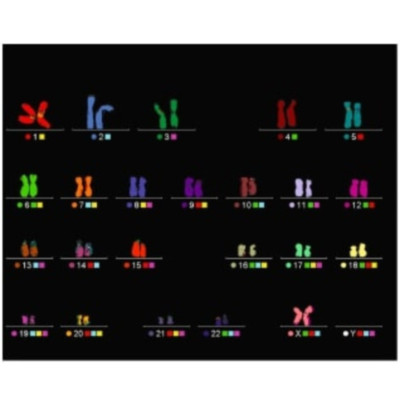Abstract
The extracellular signals regulating mammary epithelial cell growth are of relevance to understanding the pathophysiology of mammary epithelia, yet they remain poorly characterized. In this study, we applied an unbiased approach to understanding the functional role of signalling molecules in several models of normal physiological growth and translated these results to the biological understanding of breast cancer subtypes.
We developed and utilized a cytogenetically normal clonal line of hTERT immortalized human mammary epithelial cells in a fibroblast-enhanced co-culture assay to conduct a genome-wide small interfering RNA (siRNA) screen for evaluation of the functional effect of silencing each gene. Our selected endpoint was inhibition of growth. In rigorous postscreen validation processes, including quantitative RT-PCR, to ensure on-target silencing, deconvolution of pooled siRNAs and independent confirmation of effects with lentiviral short-hairpin RNA constructs, we identified a subset of genes required for mammary epithelial cell growth. Using three-dimensional Matrigel growth and differentiation assays and primary human mammary epithelial cell colony assays, we confirmed that these growth effects were not limited to the 184-hTERT cell line. We utilized the METABRIC dataset of 1,998 breast cancer patients to evaluate both the differential expression of these genes across breast cancer subtypes and their prognostic significance.
We identified 47 genes that are critically important for fibroblast-enhanced mammary epithelial cell growth. This group was enriched for several axonal guidance molecules and G protein-coupled receptors, as well as for the endothelin receptor PROCR. The majority of genes (43 of 47) identified in two dimensions were also required for three-dimensional growth, with HSD17B2, SNN and PROCR showing greater than tenfold reductions in acinar formation. Several genes, including PROCR and the neuronal pathfinding molecules EFNA4 and NTN1, were also required for proper differentiation and polarization in three-dimensional cultures. The 47 genes identified showed a significant nonrandom enrichment for differential expression among 10 molecular subtypes of breast cancer sampled from 1,998 patients. CD79A, SERPINH1, KCNJ5 and TMEM14C exhibited breast cancer subtype-independent overall survival differences.
Diverse transmembrane signals are required for mammary epithelial cell growth in two-dimensional and three-dimensional conditions. Strikingly, we define novel roles for axonal pathfinding receptors and ligands and the endothelin receptor in both growth and differentiation.
